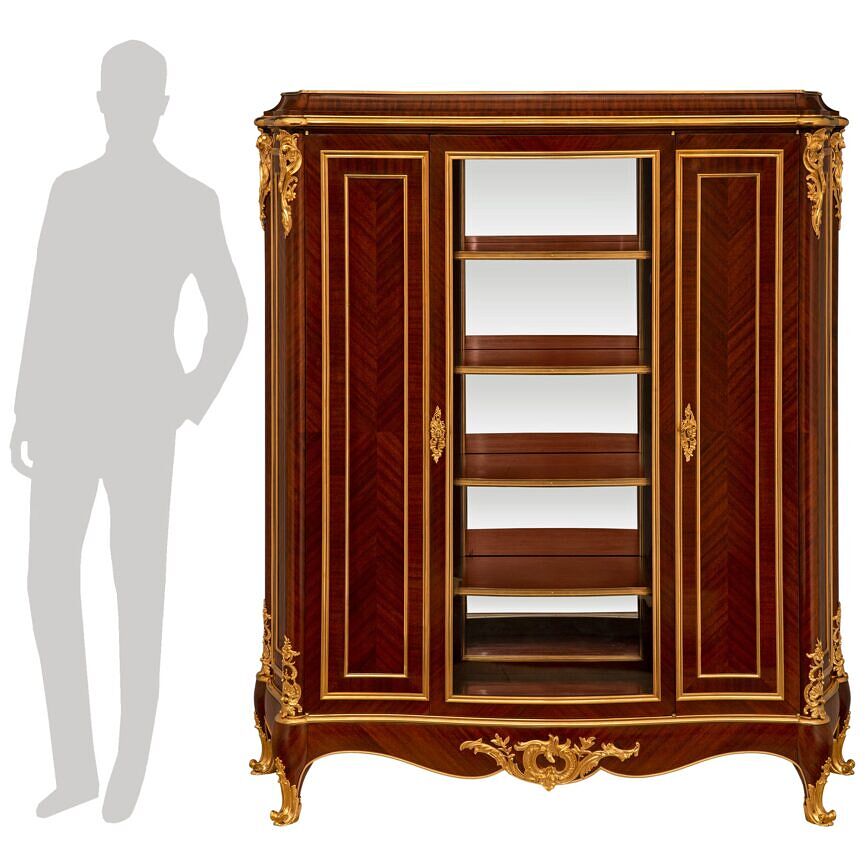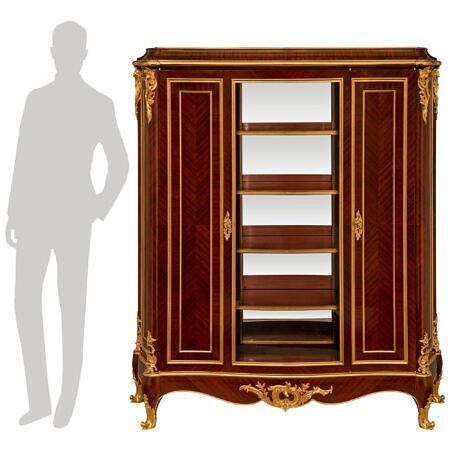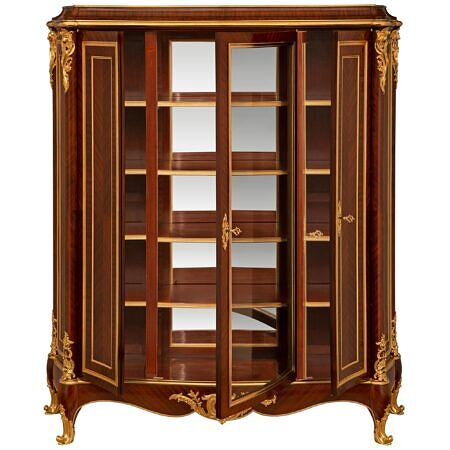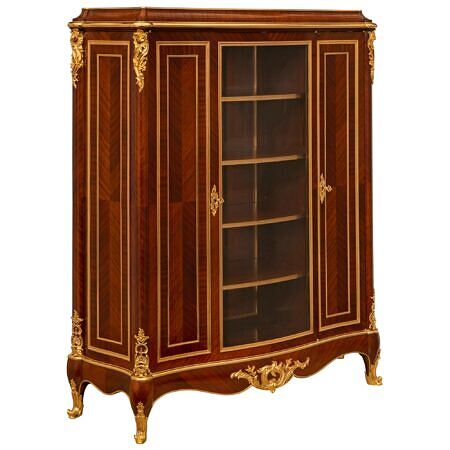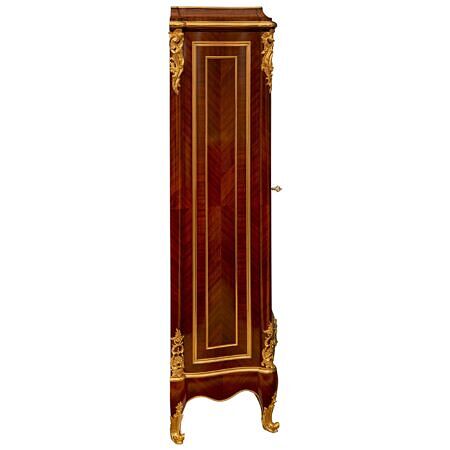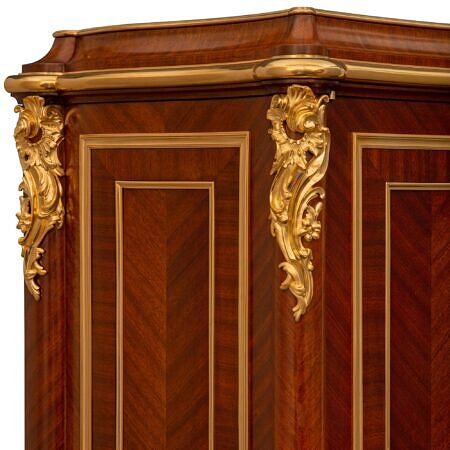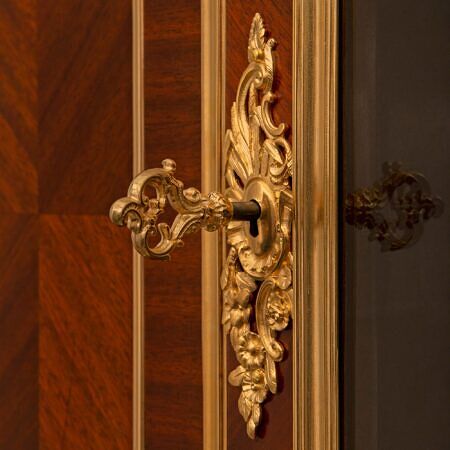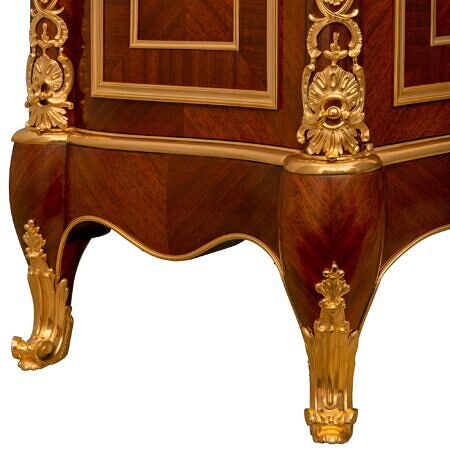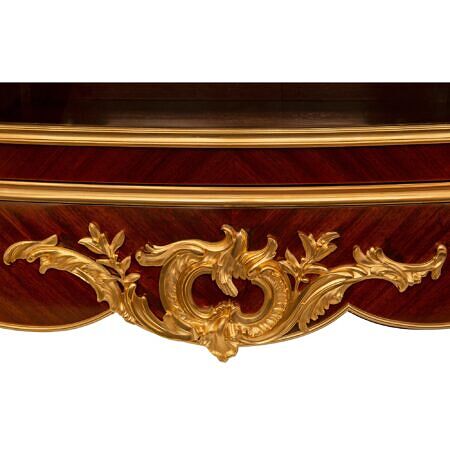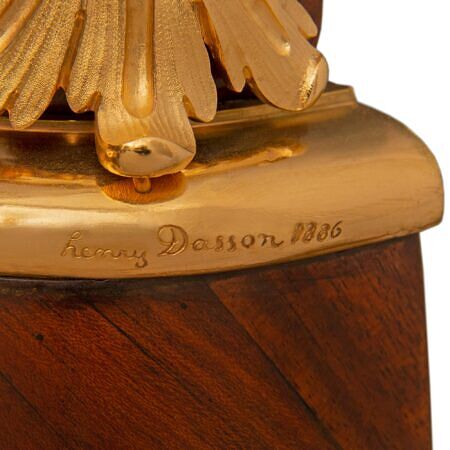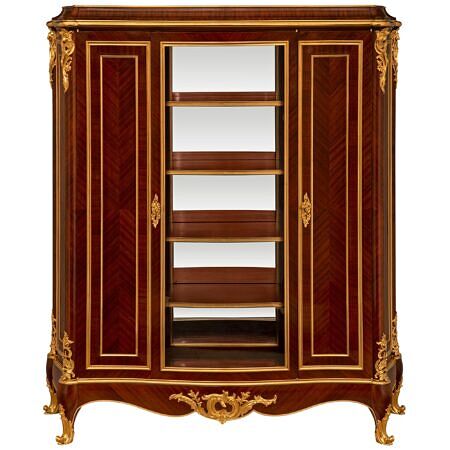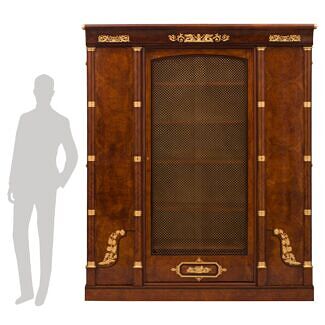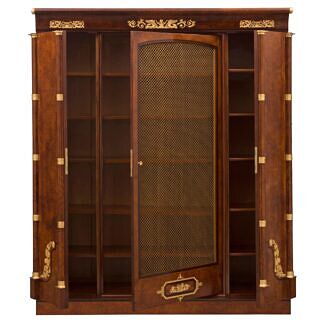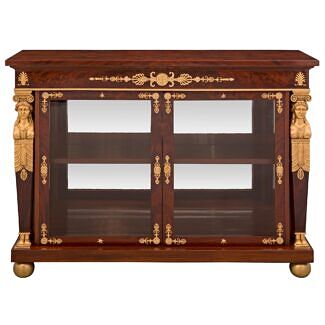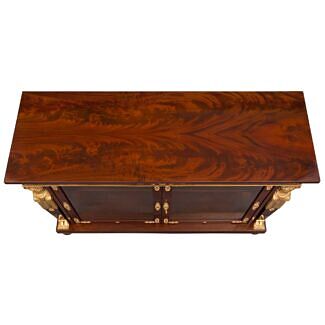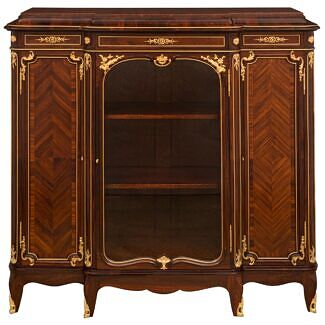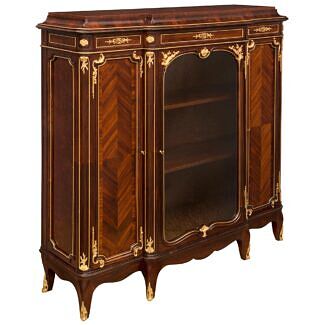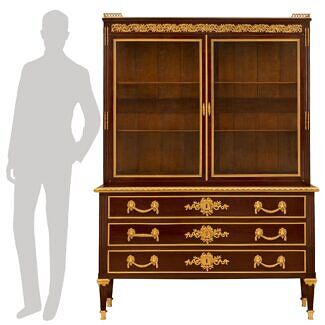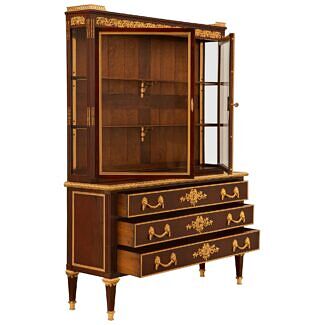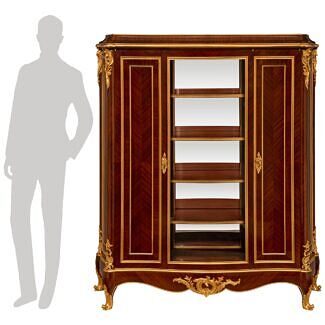A French 19th century Transitional st. Ormolu and Tulipwood cabinet/vitrine, signed Henry Dasson 1886
List: $79,800.00
A stunning and high quality French 19th century Transitional st. Ormolu and Tulipwood cabinet/vitrine, signed Henry Dasson 1886. This beautiful tall rectangular three door vitrine is supported by four Tulipwood cabriole legs and wrap around Ormolu sabots with scrolling designs.... — Read More
A stunning and high quality French 19th century Transitional st. Ormolu and Tulipwood cabinet/vitrine, signed Henry Dasson 1886. This beautiful tall rectangular three door vitrine is supported by four Tulipwood cabriole legs and wrap around Ormolu sabots with scrolling designs. The arbalest shaped frieze is decorated with a fine Ormolu edge and a central reserve of scrolled foliate designs. The two sides have similar decorations with their arbalest shape and Ormolu edges. The body has protruding Tulipwood columns running up each corner with pierced scrolling foliate decorations on the plinth and capital. The four columns flank the two side panels as well as the three front facing doors. The center glass door displays a mottled edge and Ormolu frame with four interior shelves and a foliate decorated keyhole escutcheons on the left side. On either side of the glass door are quarter veneered doors with recessed panels and mottled Ormolu edges as well as a keyhole on the left side of the right door. Both side panels are decorated in the same fashion with their recessed quarter veneers and Ormolu edges. The top has a plateau shape with quarter veneered Tulipwood and a two-level Ormolu gallery surrounding.
Henry Dasson (1825–1896) was a renowned 19th century Parisian maker of gilt-bronze mounted furniture. Dasson specialized in the production of Louis XIV, XV and XVI styles, using the finest gilt-bronze mounts and was recognized as a brilliant bronzier. Dasson was made a Chevalier of the Légion d’honneur in 1883 and was awarded the Grand Prix Artistique at the 1889 Paris Exposition Universelle.
— Read Less

